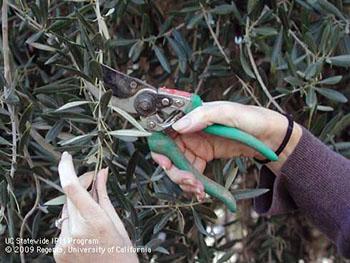Fall 2022
Fall Pruning

With Summer waning, it’s time to bid many of our flowers and veggies goodbye and do some garden clean-up. Knowing what is best for a specific plant is important, especially if you care about its fruit or flowers (for example, which cane plants to coppice*1. However, a few general principles can be followed almost any time of year.
Flowering and fruiting plants need sunlight and good air flow for best health and production, which is accomplished by pruning. Pruning is typically done during dormancy to invigorate a plant and during growing season to control size. A good rule of thumb is not to remove more than one third of a healthy plant per season. Light thinning of most perennials can be done now after they have bloomed or fruited. The 3 D’s (dead, diseased, damaged branches) and the 3 C’s (competing, crowded, crossing branches) can be done any time on a healthy plant. The 3 S’s (safety, sight line or appearance, shape) are best done during dormancy (sight line, shape) or more urgently if safety is an issue. Fall is also a good time to make sure the crowns of plants are cleared of mulch and dead leaves collecting at the base of the plant to prevent crown rot.
Stone fruits (cherry, apricot, peach, nectarine, plum) and grape vines should not be pruned as wet weather approaches due to the risk of contracting the Eutypa fungus*2. If you did not prune them after they fruited in Summer, now is the time so the cuts can heal before winter dampness begins.
Plants should not be pruned when their leaves are dropping because pruning will disrupt the energy flow occurring from the leaves into the roots. Frost-sensitive plants can be insulated by dead growth and may best be pruned in early Spring.
For more information, check out these references:
- Pruning webinar presented by A. Sutherland
- Pruning fundamentals
- Eutypa disease *2 is spread from an infected tree, shrub or vine to uninfected trees by splashing water from sprinklers or rain. The splashing water allows the fungal spores to enter through pruning or other wounds.
- Summer pruning
*1 cut back (a tree or shrub) to ground level periodically to stimulate growth
Anne Sutherland is a UC Master Gardener of Contra Costa County
Photo credits: UCANR
